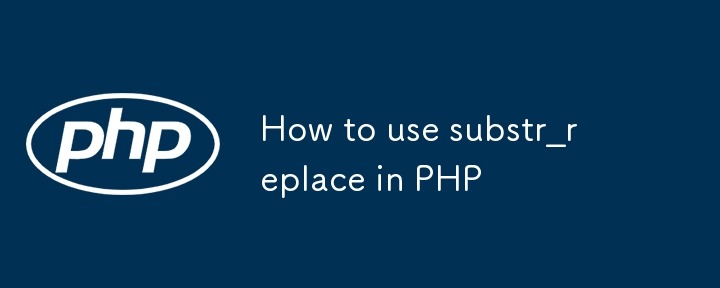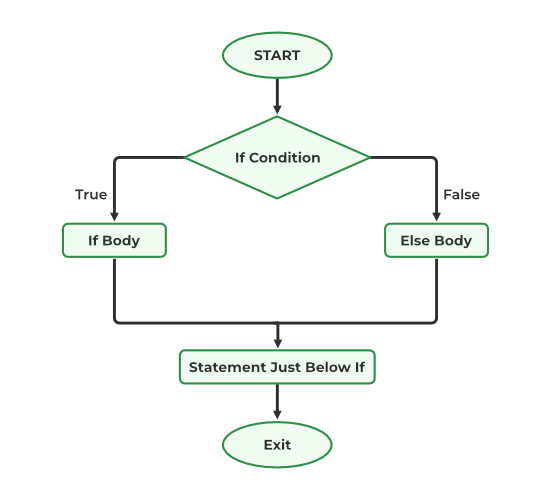Found a total of 10000 related content

PHP String Handling Functions
Article Introduction:Key Points
PHP provides a large number of built-in string processing functions that can manipulate strings in various ways. These functions include changing the case of a string, finding the length of a string, replacing part of the string, and so on. Key functions include strlen(), str_replace(), strpos(), strtolower(), strtoupper(), and substr().
The trim() function in PHP can remove spaces at the beginning and end of a string or other specified characters, which helps to clean up user input before processing. The ltrim() and rtrim() functions perform similar operations, but only remove the left or right side of the string, respectively
2025-03-01
comment 0
523

java substring example
Article Introduction:There are two uses of Java substring method: 1. substring(intbeginIndex) intercepts from the specified index to the end; 2. substring(intbeginIndex,intendIndex) intercepts the left-closed and right-open interval [beginIndex,endIndex). It is common in scenarios such as extracting file extensions, intercepting date parts, and processing URLs. When using it, you should pay attention to the index not exceeding the bounds, avoiding null pointer exceptions, and understand the memory optimization of Java7 and later versions, and ensure that the string is not empty and has a sufficient length before calling this method.
2025-07-18
comment 0
378


How to Convert CamelCase to Spaced Words Using PHP Regular Expression?
Article Introduction:This article presents a PHP solution for converting camelCase words into spaced words using regular expressions. The solution employs preg_split, which splits a string based on a specified delimiter, to identify and separate words based on the presen
2024-10-24
comment 0
583

How to Split a String at the Last Occurrence of a Delimiter?
Article Introduction:This article demonstrates a technique for splitting a string based only on the last occurrence of a specified delimiter. By reversing both the original string and the delimiter, it effectively reverses the search pattern, allowing for precise divisio
2024-10-21
comment 0
667

Tutorial on splitting JSON array into multiple subarrays based on specified column values in PHP
Article Introduction:This tutorial explains in detail how to split data in PHP based on a column value of a two-dimensional array (represented as a JSON string). By decoding the JSON string into a PHP array, and then using loop traversal and conditional judgment, the original data is effectively separated into multiple independent subarrays according to specified conditions (such as tire width), and can be optionally re-encoded into JSON format to meet different business needs.
2025-08-19
comment 0
607

How to use substr_replace in PHP
Article Introduction:substr_replace is a function in PHP to replace the contents of the specified position in a string. Its syntax is substr_replace($string,$replace,$start,$length), where $start represents the start position and $length is an optional parameter that represents the replacement length. For example, substr_replace("Helloworld!","PHP", 6, 5) output HelloPHP! Common uses include: 1. Replace the content of the specified location, such as replacing "sunny" with "rainy&quo
2025-07-11
comment 0
909


Output format requirements: PHP obtains the directory file list and uses it in JavaScript
Article Introduction:This article describes how to use PHP to read all file names in a specified directory and pass these file names into JavaScript for use. Get the file list through functions such as opendir, readdir, etc. of PHP, then use json_encode to convert the PHP array into a JSON string, and finally parse the JSON string in JavaScript to obtain the file list.
2025-08-22
comment 0
529

Conditional judgment and variable assignment based on array key values in PHP
Article Introduction:This article explains in detail how to traverse an array in PHP and make conditional judgments based on the specific string value of the array key (key), and then dynamically assign values to other variables. Direct access to the array keys through the foreach loop, combined with the strict equality operator ===, the identification and processing of the specified keys can be efficiently realized, even if the array contains mixed types of keys (string keys and numeric keys). This tutorial will provide clear code examples and explore relevant precautions to help developers accurately control program logic.
2025-08-06
comment 0
720

PHP array element conditional classification and reorganization practice
Article Introduction:This tutorial explains in detail how to efficiently classify and reorganize array elements in PHP based on specific conditions, such as whether a string contains a specific character. By first combining all the arrays to be processed, then traversing the merged data, and using string search functions (such as strpos) for conditional judgment, the elements that meet the conditions are finally allocated to the specified new array, thereby realizing accurate classification and structured reorganization of the data, avoiding complex element-by-element exchange operations.
2025-08-15
comment 0
164

PHP gets a list of directory files and uses it in JavaScript
Article Introduction:This article will introduce how to use PHP to obtain the file names of all files in a specified directory and pass these file names into JavaScript code as an array. Read the directory through PHP's file operation function, then convert the PHP array into a JSON string using the json_encode function, and finally parse the JSON string in JavaScript, thereby realizing the passing and use of file names.
2025-08-21
comment 0
879

How to split a string into an array in PHP
Article Introduction:In PHP, the most common method is to split the string into an array using the exploit() function. This function divides the string into multiple parts through the specified delimiter and returns an array. The syntax is exploit(separator, string, limit), where separator is the separator, string is the original string, and limit is an optional parameter to control the maximum number of segments. For example $str="apple,banana,orange";$arr=explode(",",$str); The result is ["apple","bana
2025-07-13
comment 0
211

PHP convert string to array
Article Introduction:String to arrays can be implemented in PHP in various ways. First, use the exploit() function to split the string according to the specified separator. The syntax is exploit(separator, string, limit). For example, separating the string with a comma will generate an array containing each element; second, if the string is in JSON format, json_decode($str,true) is used to parse it to obtain the array; third, when processing null values and whitespace characters, you can combine array_map('trim') to remove spaces on both sides of each element and filter empty items through array_filter(); fourth, if you need to control the number of splits, you can set it in explore().
2025-07-14
comment 0
639

How to Determine if a File Contains a Specific String in PHP?
Article Introduction:This article discusses methods for determining if a file contains a specified string in PHP. The main issue addressed is the limitations of iterating over the file line by line, and the proposed solutions include using file_get_contents() or grep wit
2024-10-23
comment 0
1130

How Long Can a PHP String Be?
Article Introduction:What are the Boundaries of PHP String Length?Regarding the length limits of strings in PHP, there are varying conditions based on PHP versions and...
2024-11-01
comment 0
393

Explain the difference between?string?and?integer?data types in PHP.
Article Introduction:The article discusses the differences between string and integer data types in PHP, focusing on representation, usage, operations, and memory usage. It also covers string-specific operations and type conversion between strings and integers, as well a
2025-03-19
comment 0
899

Installing PHP on macOS
Article Introduction:Yes, you can install PHP on macOS. Using Homebrew to install PHP is the easiest and most reliable method: 1. Install Homebrew; 2. Add the shivammathur/php repository; 3. Install the specified version such as php@8.2 and link it globally. Then configure the web server to run the PHP file: macOS comes with Apache, you need to start and configure the PHP module to load and place the PHP file into the specified directory; or select Nginx to use with PHP-FPM. Common problems include path errors that require PATH modification, permission issues are handled with chown/chmod, and the ability to install multiple PHP versions at the same time to manage through brewservices. Palm
2025-07-18
comment 0
809

python str.strip example
Article Introduction:strip() is a method used in Python to remove whitespace or specified characters from the beginning and end of a string. 1. Remove whitespace characters such as spaces, line breaks, tabs, etc. by default. For example, "helloworld" becomes 'helloworld' after being processed by strip(); 2. You can pass in a character set to remove the first and last specified characters, such as "###helloworld###" and then use strip('#') and it becomes 'helloworld', and it only works on the beginning and end without affecting the intermediate content; 3. strip('!-') can remove multiple specified characters at the same time, regardless of the order, check whether the beginning and end characters are in the set one by one; 4.lstrip()
2025-07-25
comment 0
987



















